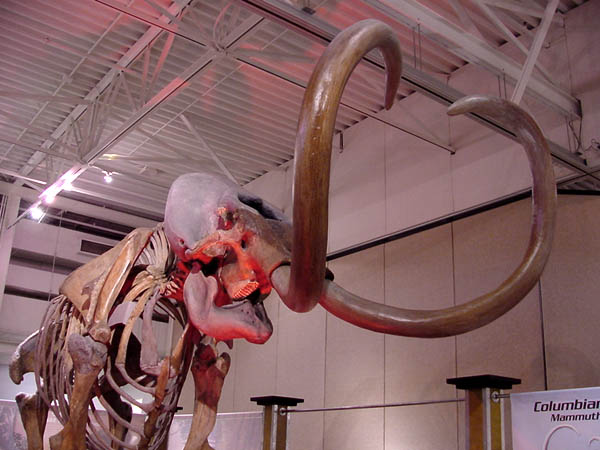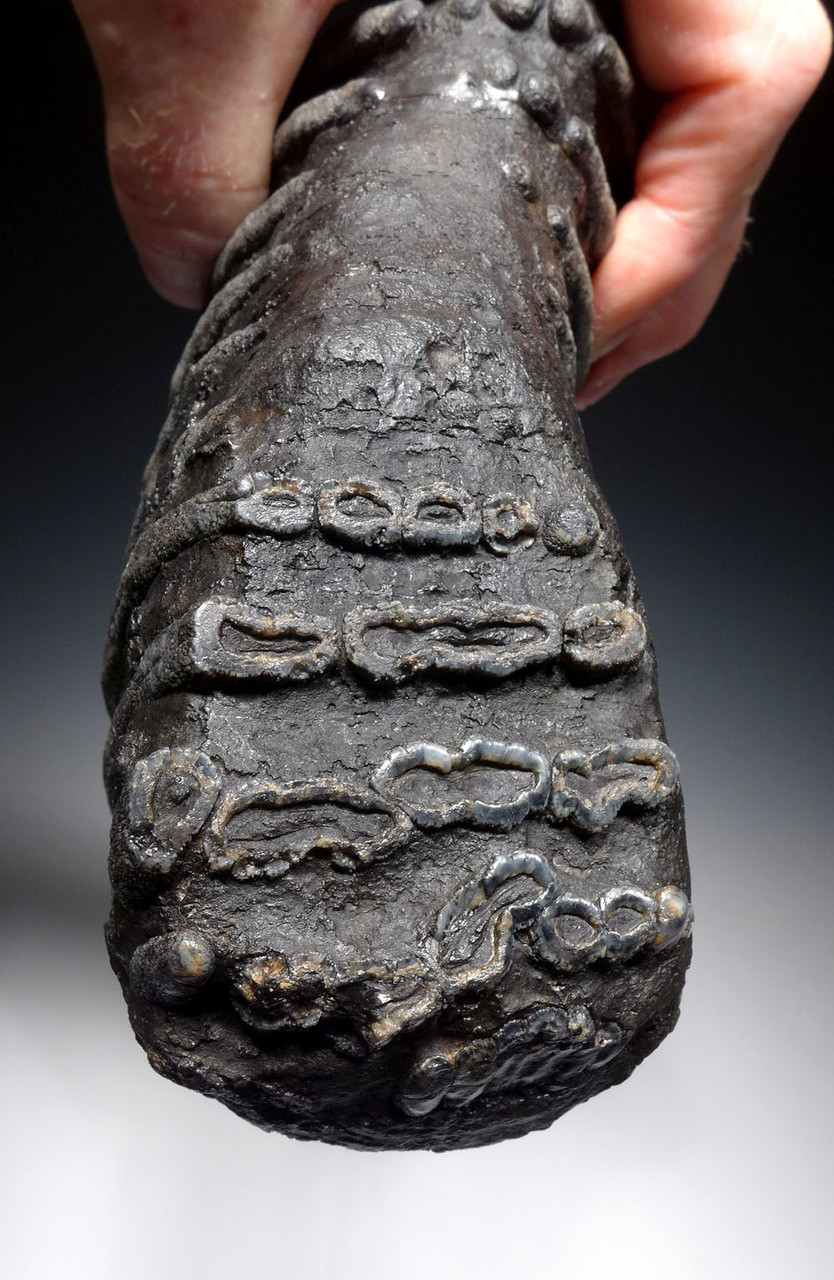Product Description
Fossil teeth from the North American Columbian Mammoth, Mammuthus columbi, are extremely rare in the market. Polished slices are common but a whole molar tooth like this, is RARE! Infinitely more scarce than teeth from the Woolly Mammoth, Columbian Mammoth teeth are a prized addition to a collection of North American mammoth fossils. This is a unique opportunity to acquire a fine specimen and the only one we have had to offer in more years than we can remember.
This rare lower molar of a Columbian Mammoth, is of a charcoal black and blue-gray color as a result of the unique chemistry in the river bottom from which it was found. The tooth was just emerging from the back of the jaw when this mammoth died with it in its mouth. The most posterior portion is missing but otherwise, this tooth is complete with full chewing surface intact. Minor single fracture repair did not require any fabrication and the entire tooth you see is completely genuine and original. Underside root detail of the plate structures, can be seen. This is not a spit tooth and the mammoth died with this tooth in its jaw. Entire tooth is extremely solid and heavily mineralized of substantial weight.
Perfect to exhibit with Primitive Man tools and artifacts since these beasts played such an important part in so many ways of the lives of prehistoric humans in North America. Columbian Mammoth fossils are far more scarce than European Woolly Mammoth fossils.
Emerging 55 million years ago, the group of mammals called Proboscideans are identified by the presence of tusks and a trunk and include mammoths, mastodons and elephants. The oldest mammoth remains have placed the beginnings of the beasts in Africa but eventually, they migrated to Europe and Asia.
The Columbian Mammoth (Mammuthus columbi) was a massive Ice Age beast and a descendant of Mammuthus meridionalis, an earlier species that migrated across the Bering Land Bridge into North America around one million years ago. The Columbian Mammoth ranged from Alaska to Florida and as far south as Mexico and Central America. While most think of the Woolly Mammoth to be large, it was not and especially when standing alongside the giant Columbian Mammoth. The Columbian Mammoth stood almost 14 feet at the shoulder as opposed to the Woolly Mammoth who stood only about 9 feet at the shoulder. The Columbian Mammoth weighed about 8-10 tons and could consume about 700 pounds of vegetation a day. The life span for a Columbian Mammoth was 60 to 80 years. The Columbian Mammoth was the first immigrant lineage of mammoths into North America. They became extinct 11,000 years ago along with all other Proboscideans in North America. Associated Paleo-Indian stone tools have been found at some fossil sites indicating these massive beasts were hunted by early North American Indians.
CLICK HERE TO LEARN MORE ABOUT THE COLUMBIAN MAMMOTH

 US DOLLAR
US DOLLAR
 EURO
EURO
 AUSTRALIAN DOLLAR
AUSTRALIAN DOLLAR
 CANADIAN DOLLAR
CANADIAN DOLLAR
 POUND STERLING
POUND STERLING






















